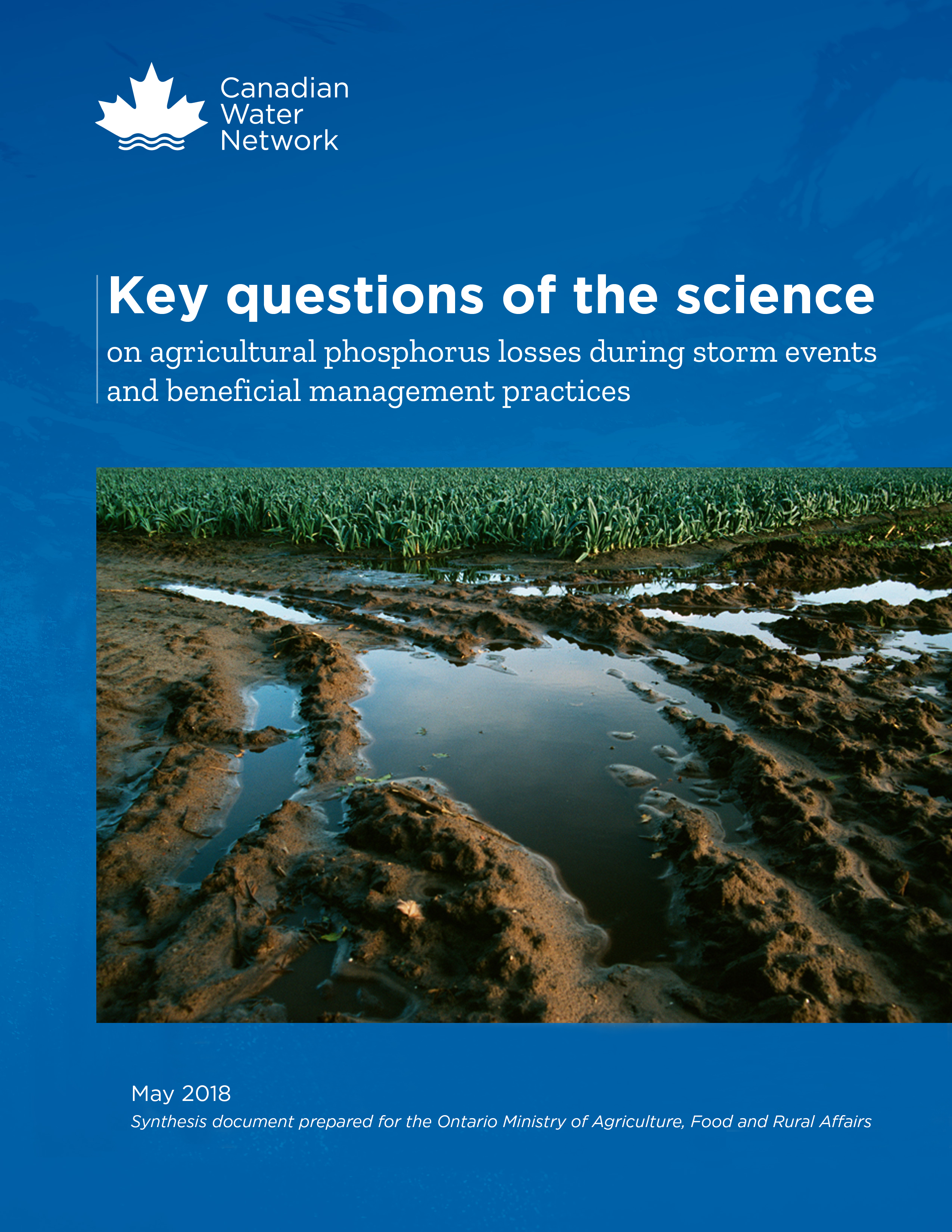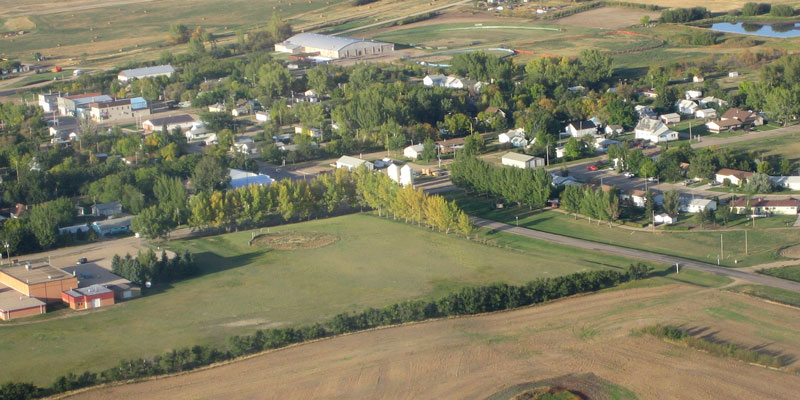Examining the Efficacy of Nutrient Management Practices for Agricultural Landscapes
Canadian Water Network (2016-2018)

Challenge
Effectively managing nutrient losses from agricultural lands is critical for protecting water quality. Phosphorus has been identified as the key nutrient involved in the eutrophication of freshwater systems (Schindler, 1977) and has been linked to algal blooms. Managing phosphorus losses from agriculture is a core focus in regions like the western basin of Lake Erie (Canada-Ontario Lake Erie Action Plan, 2018). Ontario’s Ministry of Agriculture, Food and Rural Affairs (OMAFRA) supports the selection, design and implementation of beneficial management practices (BMPs) that reduce phosphorus losses from agricultural lands. OMAFRA contacted CWN to provide an updated synthesis of the implications of leading knowledge and practice for phosphorus management options, including an assessment of BMP effectiveness during significant hydrologic events such as snowmelt, winter rainfall and storms related to climate change.
Project
With financial support from OMAFRA, CWN led a project to summarize the state-of-the-knowledge on the effectiveness of existing approaches to phosphorus management. The project’s overall goal was to better inform action and investment by policy makers, Conservation Authorities and farmers in Ontario.
CWN convened a Technical Advisory Group of leading international experts in soil science, agricultural management, water quality, hydrology, modelling and climate change to inform the design of a workshop that would gather insights and direction from the scientific community. The Group established three key questions:
- What is the relative importance or contribution of hydrologic event-based losses from the landscape to overall nutrient loading to receiving waters as compared to losses during average conditions? What conditions on agricultural lands increase susceptibility to event-based losses?
- What BMPs for controlling phosphorus losses are exacerbated during major hydrological events?
- What is least known or most uncertain about BMPs, but also most likely to provide value in advancing nutrient management?
Outputs
In June 2017, CWN hosted a workshop in Toronto, Ontario with 18 technical experts from southwestern Ontario, including researchers, Conservation Authorities, federal and provincial government departments, and agriculture industry representatives. Additional researchers and government staff from Western Canada and the United States were also invited to share their knowledge. The attendees completed a pre-workshop survey, which assessed areas of alignment with regard to the three questions.
Following the workshop, CWN prepared a synthesis document for OMAFRA, in consultation with the Technical Advisory Group, of the outcomes and key messages from the workshop. The document focused on the high-level implications of leading knowledge and practice for selecting and implementing phosphorus management options, including recommended approaches and next steps for BMP selection. In the spring of 2018, CWN contacted representatives from the agricultural community, including those who work closely with farmers, to provide feedback on how the recommended approaches would play out “on-the-ground.” Their input was collated in a supplementary document.
Key conclusions from the synthesis document include the importance of a multi-barrier, site-based approach to phosphorus management that balances crop fertility risk with environmental impacts in the context of significant hydrologic events. At the time of the synthesis report, efforts were already underway on many of the recommended approaches to move toward a site-based approach that considers dominant nutrient transport pathways, but better coordination of efforts, case studies, incentives and agricultural extension were also needed to support the agricultural community.
Outcomes
The insights generated in the workshop and the synthesis document were shared with the project participants, OMAFRA and published on CWN’s website. These findings will inform efforts by OMAFRA and other groups who are implementing phosphorus management programs and by CWN to inform its complementary work on convening and supporting groups who manage phosphorus losses from urban landscapes.
This project was funded by the Ontario Ministry of Agriculture, Food and Rural Affairs.





